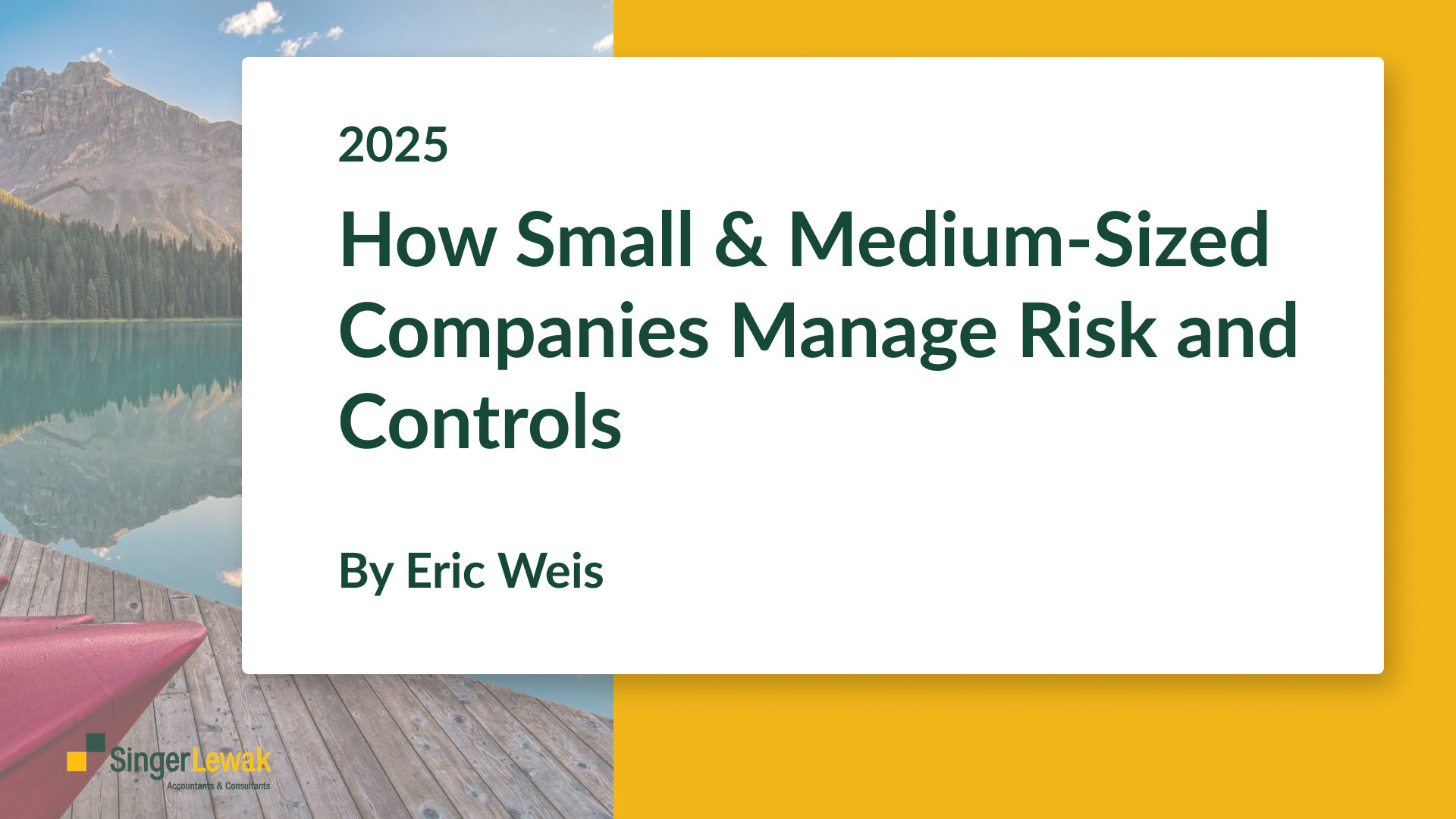In an increasingly complex business landscape, small and medium-sized enterprises (SMEs) must proactively manage risk and implement effective internal controls to ensure operational resilience and long-term success.
While SMEs may lack the resources of large corporations, they can still build robust risk management frameworks tailored to their size and industry. This article explores how SMEs can manage risk, the role of internal controls, and the critical importance of proactive leadership—especially from the CFO.
Understanding Risk in the SME Context
SMEs face a wide range of risks, including:
-
Operational risks: Supply chain disruptions, equipment failure, or staff turnover.
-
Financial risks: Cash flow issues, fraud, or credit defaults.
-
Compliance risks: Regulatory violations, tax errors, or labor law breaches.
-
Cybersecurity risks: Data breaches, phishing, or ransomware attacks.
-
Strategic risks: Market shifts, poor planning, or competitive threats.
Key Strategies for Managing Risk
1. Risk Assessment and Prioritization
SMEs should identify and evaluate risks based on likelihood and impact. Tools like risk matrices and SWOT analysis help prioritize mitigation efforts.
2. Developing a Risk Management Plan
A formal plan should include:
-
Risk categories and descriptions
-
Assigned risk owners
-
Mitigation strategies
-
Monitoring and review schedules
3. Implementing Internal Controls
Internal controls are essential for preventing errors, fraud, and inefficiencies. These include:
-
Segregation of Duties (SoD): A common challenge in SMEs due to limited staffing. SoD ensures that no single individual has control over all aspects of a financial transaction (e.g., initiating, approving, and reconciling payments). When full SoD isn’t feasible, compensating controls such as independent reviews, dual sign-offs, or periodic audits should be implemented.
-
Approval Hierarchies: Clear thresholds for spending and decision-making authority.
-
Access Controls: Restricting access to sensitive systems and data based on roles.
-
Reconciliations and Audits: Regular financial reconciliations and internal or external audits to detect anomalies.
The Importance of Written Policies and Procedures
Many SMEs operate with informal processes, which increases the risk of inconsistency and control breakdowns. Clearly written policies and procedures:
-
Provide a reference point for employees
-
Ensure consistency in operations
-
Support training and onboarding
-
Serve as evidence of compliance during audits or investigations
These documents should be reviewed annually and updated as the business evolves.
Common Red Flags for Control Breakdowns or Heightened Risk
CFOs and business leaders should watch for these warning signs:
-
Unexplained variances in financial reports
-
Delayed reconciliations or missing documentation
-
Overreliance on one individual for multiple critical tasks
-
Frequent override of controls or policy exceptions
-
Lack of documentation for key decisions or transactions
-
Rapid growth without corresponding control enhancements
-
Employee complaints or whistleblower reports
The CFO’s Role: Proactive Prevention Over Reactive Response
The CFO is uniquely positioned to lead risk management efforts. Rather than waiting for a crisis, the CFO should:
-
Champion a culture of accountability and transparency
-
Regularly assess the control environment
-
Ensure timely financial reporting and variance analysis
-
Lead the development and enforcement of policies and procedures
-
Engage external advisors for independent assessments
A proactive CFO can prevent costly errors, protect the company’s reputation, and support strategic decision-making.
Risk & Controls Health Check: A CFO’s Checklist
Use this checklist to evaluate your company’s current risk posture:
Have we identified and prioritized our top 10 risks?
Do we have a documented risk management plan?
Are key financial duties appropriately segregated?
Where SoD is not possible, are compensating controls in place?
Are our policies and procedures clearly written and accessible?
Do we conduct regular reconciliations and variance analysis?
Are access controls and user permissions reviewed periodically?
Have we trained staff on compliance, cybersecurity, and ethics?
Do we monitor for red flags or control breakdowns?
Have we engaged an external advisor for a fresh perspective?
Conclusion: Take the First Step Toward Stronger Controls
Risk management is not a one-time project—it’s an ongoing discipline. For SMEs, the CFO plays a pivotal role in building a resilient organization. Taking the first step doesn’t have to be overwhelming.
Reach out to SingerLewak—a trusted advisor with deep experience in helping SMEs strengthen their risk and control environments. A fresh perspective can uncover blind spots and provide proactive attention to your highest-risk areas before they become costly problems.



